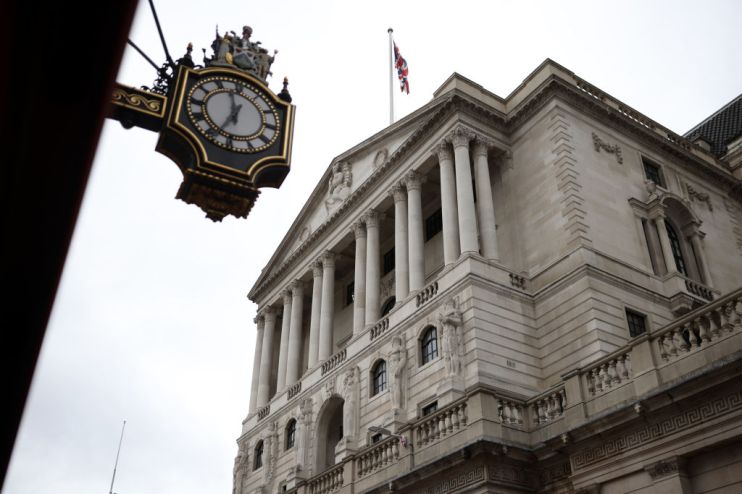Bank of England doubles daily bond purchase cap, but borrowing costs surge

The Bank of England is doubling the cap on daily bond purchases it can make under its emergency support scheme for the gilt market, it announced today, but gilt yields still surged.
The central bank said it will now hoover up as much as £10bn a day in long-dated government bonds until the package ends this Friday.
Despite the extra support, UK borrowing costs fired higher immediately after the announcement.
Yields on the 2-year UK gilt – a government bond – climbed 26 basis points, while the rate on the 30-year UK gilt added more than 30 basis points.
Yields and prices move in opposite directions.
Today’s yield surge has also been driven by the investors still lacking confidence in the government’s tax and spending plans despite chancellor Kwasi Kwarteng bringing forward the Office for Budget Responsibility’s forecast to 31 October. He will also outline his medium term fiscal plan the same day.
Yield on 30-year UK gilt over last six months

Earlier this month, the Bank was forced to launch a £65bn backstop for the UK debt market to stamp out what it described as a “material risk to UK financial stability” caused by soaring gilt yields.
The Bank has got nowhere maxing out the facility, cumulatively buying around £5bn in a week or so.
However, it said it “is prepared to deploy this unused capacity” should the bond market get out of hand again.
A new loan scheme has also been created, the Bank said today, which will accept a wider range of assets banks can use as collateral to borrow money to support debtors facing margin calls.
The move is designed to prevent another sudden gilt sell off which happened after the mini budget. An existing repo facility has also been strengthened.
The money being used in the programme is not taxpayer money. It is newly created and mirrors the structure of the Bank’s quantitative easing policy.
In the immediate aftermath of chancellor Kwasi Kwarteng’s mini budget, rates on long-dated debt hit their steepest level in over 20 years, while the pound plunged to its lowest level against the US dollar on record.
That selloff sent yields higher, triggering a liquidity crunch among liability driven investment funds (LDI), which UK pensions invest in.
The Bank estimates LDI funds have investors £1 trillion in long-dated government debt.
Yields reversed after Bank governor Andrew Bailey and co launched the package. The pound has recovered ground on the dollar.
However, rates have since accelerated again and sterling has weakened again.
Investors ditched UK debt due to concerns over Kwarteng and prime minister’s Liz Truss’s tax cutting and borrowing splurge.
Analysts said the Bank’s additional measures are unlikely to prevent bond markets jolting again after the package finishes on Friday.
“The [Bank of England] did not get anywhere close to buying the maximum amounts in the previous operations anyway and thus increasing the maximum potential purchases would not necessarily change the fate of the market if actual purchases remain low,” analysts at RBC said.